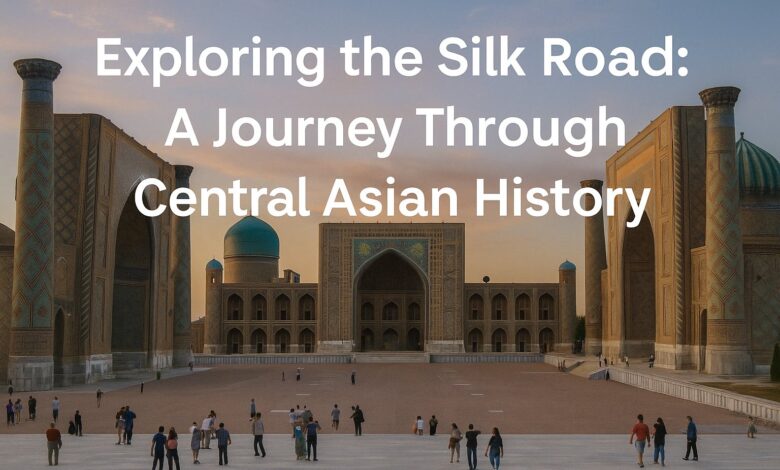Exploring the Silk Road: A Journey Through Central Asian History

For centuries, the Silk Road was more than just a trade route — it was a bridge between East and West, a path of cultural exchange, and a source of wealth, stories, and mystery. Today, travelers can trace its ancient trails across Central Asia, discovering majestic landscapes, historic cities, and living traditions that still echo the spirit of the old world.
What Was the Silk Road?
The Silk Road was a network of trade routes connecting China, the Middle East, and Europe, flourishing from around 200 BCE to the 15th century. Merchants transported not only silk, spices, and gold, but also religions, philosophies, and technologies.
It passed through what is now Uzbekistan, Kyrgyzstan, Kazakhstan, Turkmenistan, and Tajikistan, among others — regions rich in history and natural beauty.
Uzbekistan: Timeless Cities of Samarkand & Bukhara
Uzbekistan is home to some of the most iconic stops on the Silk Road:
- Samarkand: With its dazzling turquoise domes, Registan Square, and the tomb of Tamerlane, this city was once the heart of global science and trade.
- Bukhara: A UNESCO World Heritage site, known for its ancient madrasahs, bustling bazaars, and holy sites like the Poi Kalyan complex.
Walking through these cities feels like stepping into a Persian miniature painting.
Kyrgyzstan: Mountains, Nomads, and Yurts
Kyrgyzstan offers the natural side of the Silk Road. Here, the route wove through alpine valleys and past nomadic tribes.
- Stay in a traditional yurt camp on the shores of Issyk-Kul Lake.
- Explore Tash Rabat, a 15th-century caravanserai nestled in the mountains — a haven for weary traders and travelers.
The country’s rich oral storytelling, horsemanship, and eagle hunting traditions still thrive today.
Kazakhstan: Vast Steppe and Soviet-Era Echoes
Kazakhstan’s contribution to the Silk Road is quieter, but equally impressive. The city of Turkestan was a spiritual hub, and the Great Steppe was home to nomads who traded livestock and textiles.
Today, Kazakhstan balances old and new — modern cities like Almaty blend with archaeological wonders and deep-rooted Turkic culture.
More Than a Route: A Cultural Legacy
The Silk Road was a highway of ideas. It helped spread:
- Buddhism from India to China
- Islam into Central Asia
- Paper-making and gunpowder across continents
Today, its legacy lives on in the form of shared cuisines (think dumplings, tea culture), artistic motifs, and even languages that show traces of Silk Road exchange.
Final Thoughts
Exploring the Silk Road isn’t just a journey through space — it’s a journey through time. Whether you’re wandering through the blue-tiled mosques of Samarkand or sipping tea under the stars in a Kyrgyz yurt, you’re connecting with centuries of human ambition, faith, and discovery.
So pack your curiosity and an open heart — Central Asia awaits.



